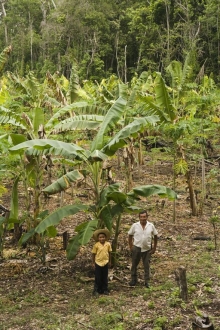Contemporary communities of the Maya forest have pioneered lands and adapted to environmental conditions with a long and dynamic tradition stretching back millennia to the ancient Maya civilization. While recent community land use patterns have emerged under different conditions, they involve the same natural and physical resources, and depend on a deep alliance between culture and nature.
Regardless of contemporary political boundaries, this region shares a common past, is united by a related present, and stands threatened by an ominous future. Current strategies for survival are unsustainable, and the accelerated deterioration of cultural and natural resources risk irreversible damage at every scale. Without a clear appreciation of the alternatives, this situation will persist.
Furthermore, as globalization homogenizes society and infringes on time-honored traditions, community continuity and valuable accumulated experiential knowledge native to the region are vanishing. Our research demonstrates the critical need to understand how ancient patterns of land use change over time and across space, to model sustainability, resilience, collapse, and succession in order to improve our understanding and ability to forecast future potentials for conservation in the region.
The legacy of human settlement development and the evolution of social complexity in the Maya forest can be traced back across the millennia, and El Pilar is a significant part of that past as well as a model for its future. Over time, the Maya forest has adapted to local Maya population growth and regional environmental fluctuations. The foundation we have established at El Pilar showcases past land use patterns to understand changing natural and cultural spaces, and creates a combined knowledge base drawing from both science and local traditions. This foundation forms the basis of a replicable conservation model for the Maya forest that underscore the responsibilities and benefits of conservation strategies for the local community and the region as a whole.

